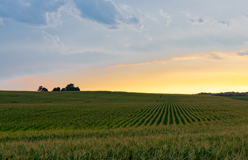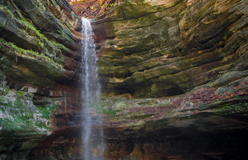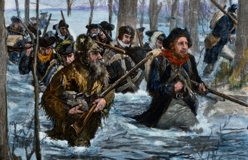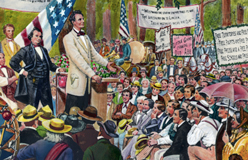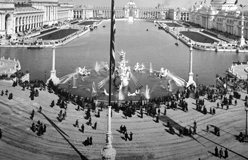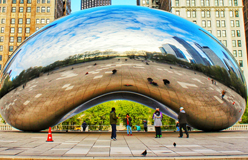Almost anywhere you dig in Illinois, you’ll find rich soil. Much of this soil contains clay minerals called illite.
These minerals make the soil great for farming. That’s why Illinois is an important part of the Corn Belt. Farming, especially corn and soybeans, is still a big part of Illinois’s economy. The land includes rolling hills, prairies, and rivers. Most of these features were created by glaciers during the ice age.
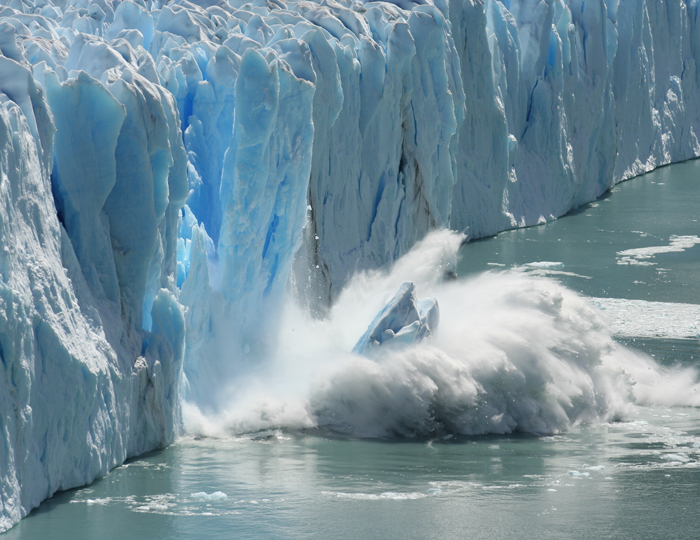
◀ The last ice age ended 10,000 years ago. Before then, glaciers covered more than three-quarters of Illinois. Glaciers are huge masses of ice that move slowly across land. They covered most of Canada and much of the northern United States. As glaciers moved, they changed the land beneath them. In Illinois, they carved paths that became our rivers and Lake Michigan in the northeast. In other places, they flattened the land that became prairie.
llinois is called the Prairie State because of the Central Plains. This huge area of flat land covers more than 90 percent of the state. The soil here contains sand, clay, silt, and rocks left by melting glaciers. (Silt is tiny bits of rock and minerals that make soil rich.) This makes Illinois perfect for growing crops like corn. ▶


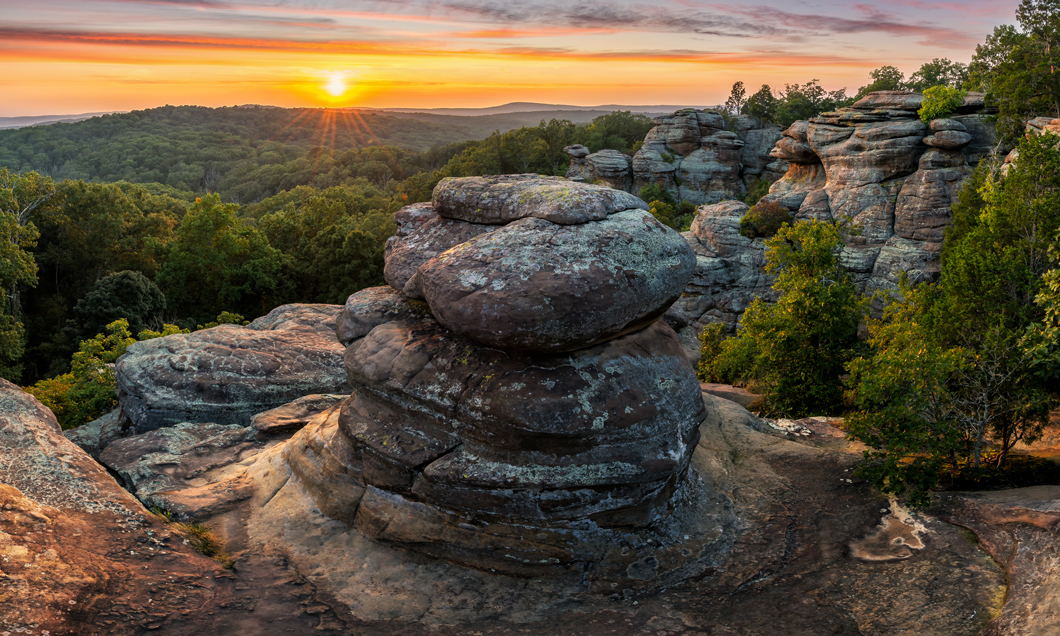
▲ Like the Driftless Area, Shawnee Hills in southern Illinois wasn’t touched by glaciers. It’s a rough area with lots of forests. Little Grand Canyon in Shawnee National Forest is here. You’ll see sandstone cliffs, caves, rock formations, and clear lakes filled by spring water.
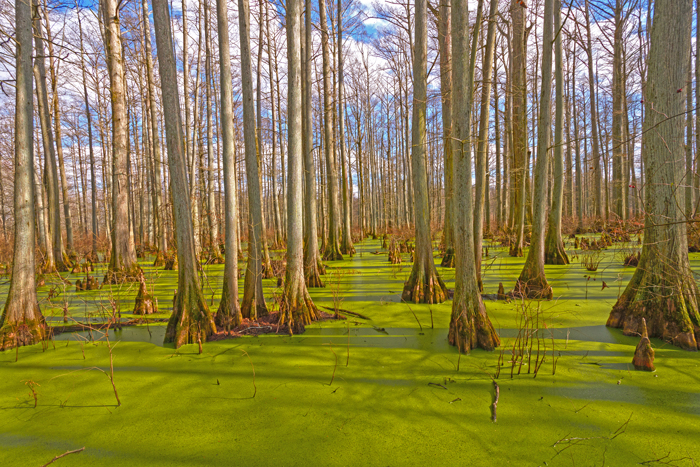
◀ South of Shawnee Hills are the Southern Illinois Lowlands. This area is actually part of the Gulf Coastal Plain. Long ago, this land was covered by the Gulf of Mexico. Much of it is swampy forest. Here, you’ll find plants and animals that don’t live anywhere else in Illinois. The state’s lowest point is here, just 279 feet above sea level.
▲ Water shapes much of Illinois’s borders. The Mississippi River forms the western border and flows south for almost 600 miles. It meets the Ohio River, which makes the southern border. The Wabash River creates the southeastern border, while Lake Michigan forms the northeastern edge. The Illinois River (above) flows completely within the state.
